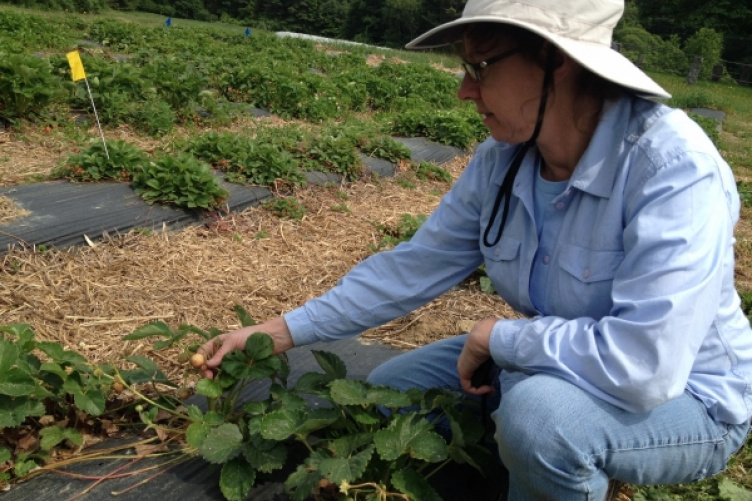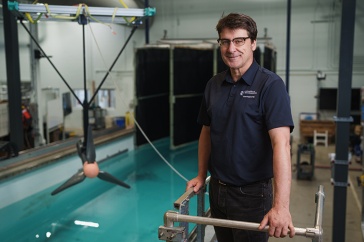
A Ph.D. program isn’t something one enters into lightly. It’s a big commitment — years, in fact. But for Lise Mahoney, once she began her strawberry research at UNH back in 2004, working toward that academic goal eventually became just another year.
A former chemical engineer who spent 26 years in the industry, Mahoney found her way to studying strawberries after leaving the field 13 years ago. Searching around for what would come next, she enrolled in a master gardener’s course through UNH Cooperative Extension.
“It was an excellent program but it wasn’t quite enough to satisfy my curiosity so I thought I’d take a few classes. I ended up taking five at once. And then I took some more,” Mahoney says.
And then, at the urging of her advisor, Tom Davis, a professor of plant biology and genetics in the College of Life Sciences and Agriculture, Mahoney took more — enough to earn a master’s degree in plant biology in 2004.
“After that, Tom said, ‘It’s only another year or two for a Ph.D.’ So I kept going,” she says.
Mahoney received her Ph.D. in 2014, marking 10 years of strawberry research. She is continuing those studies as a post-doctorate through the NH Agricultural Experiment Station where she previously worked with Davis to start developing tools for marker-assisted breeding, an approach that takes advantage of the DNA fingerprints of the plants to predict their characteristics.
Mahoney’s focus is on breeding strawberries with colored petals — reds, pink, even lavender — instead of the traditional white flowers, adding to their horticultural value.
“Think about someone hanging a nice big strawberry plant on their porch,” she says.
Her plants also are grown to be flavorful and disease resistant. [flower petals]
Mahoney came to her particular research slant after reading about strawberry pigment years ago during one of the first classes she took. The article stated that the Fragaria vesca, commonly called the wild strawberry or woodland strawberry, had equal amounts of cyanidin, the pigment found in many red berries, and pelargonidin. Both are antioxidants. Cultivated strawberries have 10-15 percent cyanidin and 85-90 percent pelargonidin.
“That interested me. I wanted to know if it was actually true. And I wanted to know why,” Mahoney says. She also wondered if, using traditional breeding methods, other varieties could be used to introduce higher levels of cyanidin into the cultivated strawberry. “The answer to both questions was yes.”
A trial is now underway on 10 of Mahoney’s varieties that she hopes will eventually be introduced to the commercial market. Each variety is covered under intellectual property agreements.
“I’m very protective of my little flowers. Every one is a unique plant. There aren’t any duplicates,” she says of the thousands of plants she has growing at Woodman Farm. She also is working to grow the berries organically in New England, and adds, “It’s a challenging environment.”
With eight sets of chromosomes, the strawberry is one of the most genetically complex plants. Davis was among an international team of researchers who completed the first DNA sequence of any strawberry plant, giving breeders much-needed tools to create tastier, healthier strawberries.
According to the U.S. Department of Agriculture, the United States is the largest producer of strawberries in the world.
-
Written By:
Jody Record ’95 | Communications and Public Affairs | jody.record@unh.edu


















































